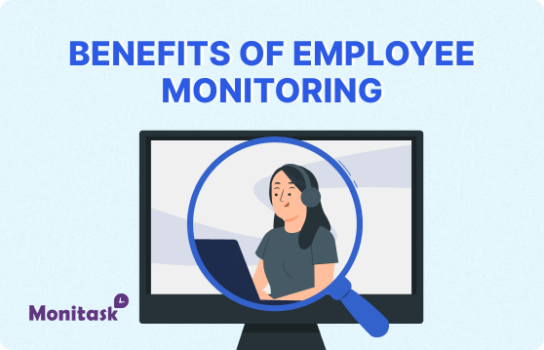Employee Turnover Rate: Definition & Calculation

Employee turnover is a critical metric that companies monitor closely, as it directly impacts organizational stability, productivity, and costs. Understanding employee turnover—its causes, effects, and how to calculate it—is essential for businesses aiming to maintain a healthy and productive workforce. This article delves into the concept of employee turnover, explains how to calculate it, and discusses strategies to manage and reduce turnover rates.
Introduction
Employee turnover refers to the rate at which employees leave an organization and are replaced by new hires. While some turnover is inevitable and even healthy, excessive turnover can be detrimental to an organization’s success. High turnover rates can lead to increased recruitment and training costs, disrupt team dynamics, and negatively affect employee morale and productivity. Conversely, a low turnover rate can indicate employee satisfaction, strong organizational culture, and effective management.
Understanding employee turnover is crucial for companies looking to improve employee retention and create a more stable work environment. This article will explore the different types of turnover, how to calculate turnover rates, and the implications of turnover on a business. We’ll also discuss strategies to manage and reduce employee turnover and answer some common questions related to this important topic.
What Is Employee Turnover?
Employee turnover is the process through which employees leave a company, either voluntarily or involuntarily, and are replaced by new employees. The turnover rate is a measure of the number of employees who leave an organization during a specific period, usually a year, relative to the total number of employees.
There are two main types of employee turnover:
Understanding the causes and consequences of both types of turnover is essential for managing and reducing turnover rates effectively.
Why Is Employee Turnover Important?
Employee turnover is a critical metric for several reasons:
- Cost Implications: High turnover rates can lead to significant costs associated with recruiting, hiring, and training new employees. These costs can include job advertising, background checks, onboarding, and lost productivity during the transition period.
- Impact on Morale and Productivity: Frequent employee departures can disrupt team dynamics, lower morale, and reduce overall productivity. Remaining employees may experience increased workloads and stress, which can further contribute to turnover.
- Organizational Stability: High turnover can indicate underlying issues within the organization, such as poor management, inadequate compensation, or a toxic work environment. Addressing these issues is crucial for maintaining organizational stability and long-term success.
- Customer Satisfaction: In customer-facing roles, high turnover can negatively impact customer satisfaction. New employees may require time to adjust to their roles, which can lead to inconsistencies in service quality.

How to Calculate Employee Turnover Rate
Calculating the employee turnover rate is a straightforward process that provides valuable insights into the stability of your workforce. The basic formula for calculating employee turnover is:
Steps to Calculate Employee Turnover Rate
Example Calculation
Suppose a company had 100 employees at the beginning of the year and 120 employees at the end of the year. During the year, 25 employees left the company.
The turnover rate for the year is 22.7%, meaning that approximately 23% of the workforce left the company during the year.
Get more out of your business
Get the best employee engagement content every week via mailing list

Interpreting Employee Turnover Rates
Interpreting the employee turnover rate requires context. A high turnover rate is not inherently bad, nor is a low turnover rate always good. The key is to understand the underlying reasons behind the turnover and how it compares to industry benchmarks.
- High Turnover Rate: A high turnover rate may indicate dissatisfaction among employees, poor management, or lack of growth opportunities. It’s important to investigate the causes and address any underlying issues.
- Low Turnover Rate: While a low turnover rate can suggest employee satisfaction and a strong organizational culture, it may also indicate a lack of innovation or stagnation. Some turnover is natural and healthy, as it brings fresh perspectives and ideas into the organization.
Factors Contributing to Employee Turnover
Several factors can contribute to employee turnover, and understanding these can help organizations develop strategies to reduce turnover rates. Common factors include:
Strategies to Reduce Employee Turnover
Reducing employee turnover requires a proactive approach and a commitment to creating a positive work environment. Here are some strategies to help manage and reduce turnover rates:
Conclusion
Employee turnover is a vital metric that can significantly impact an organization’s success. By understanding the causes of turnover and implementing strategies to reduce it, companies can create a more stable, productive, and satisfied workforce. Calculating and monitoring turnover rates, addressing the root causes of turnover, and fostering a positive work environment are essential steps in managing employee retention effectively.
— The Monitask Team
Frequently Asked Questions
How often should employee turnover rate be calculated?
Employee turnover rate is typically calculated on an annual basis, but it can also be calculated monthly or quarterly to monitor trends and address issues promptly.
Can a high turnover rate ever be beneficial?
Yes, a high turnover rate can be beneficial in certain situations, such as when an organization is undergoing significant change or needs to remove underperforming employees. However, consistently high turnover can indicate deeper issues that need to be addressed.


